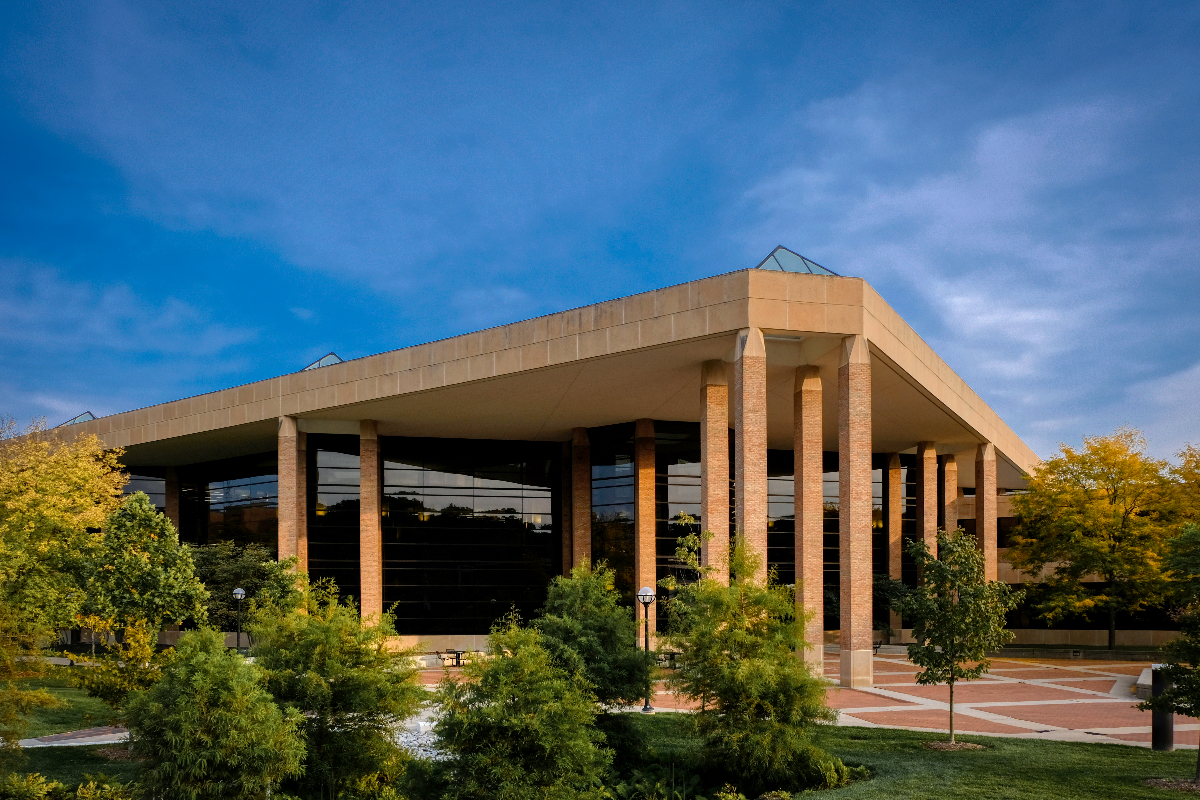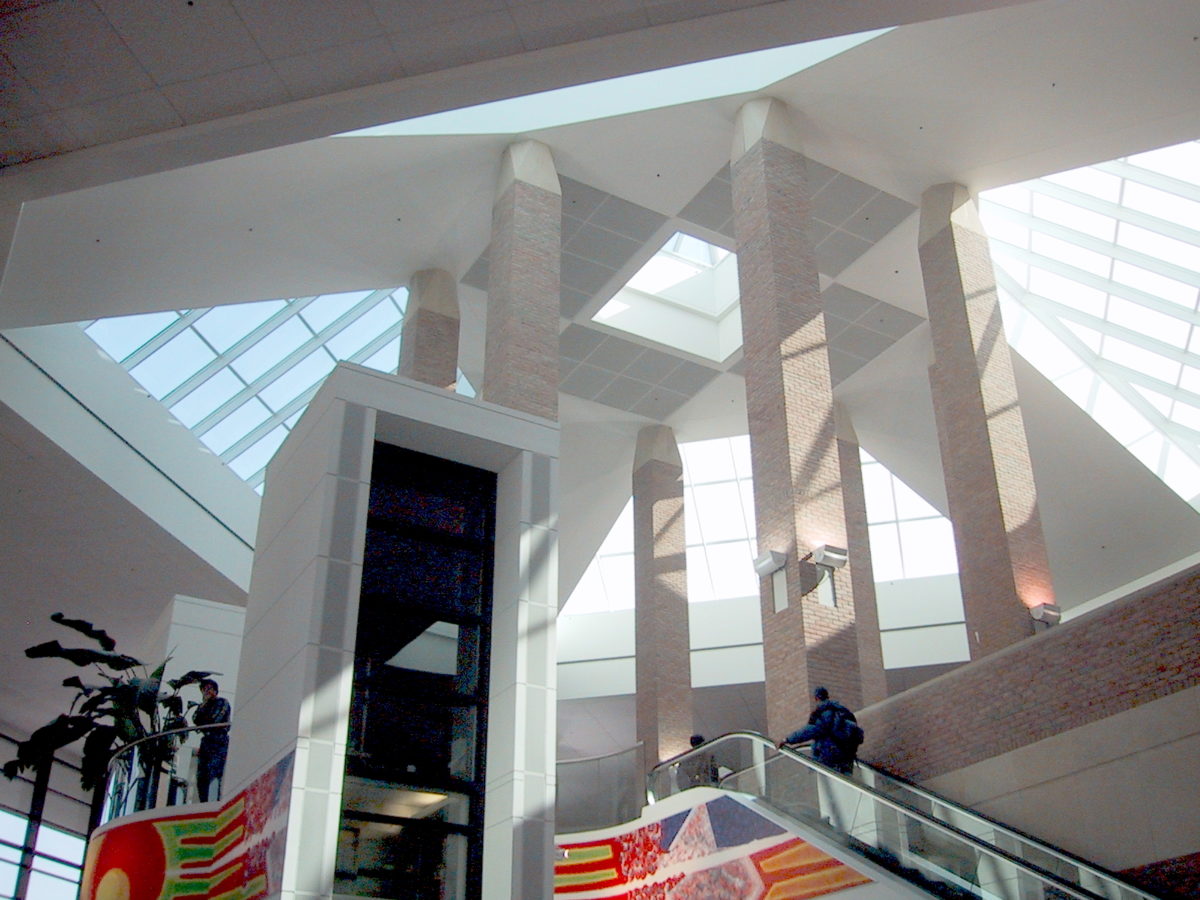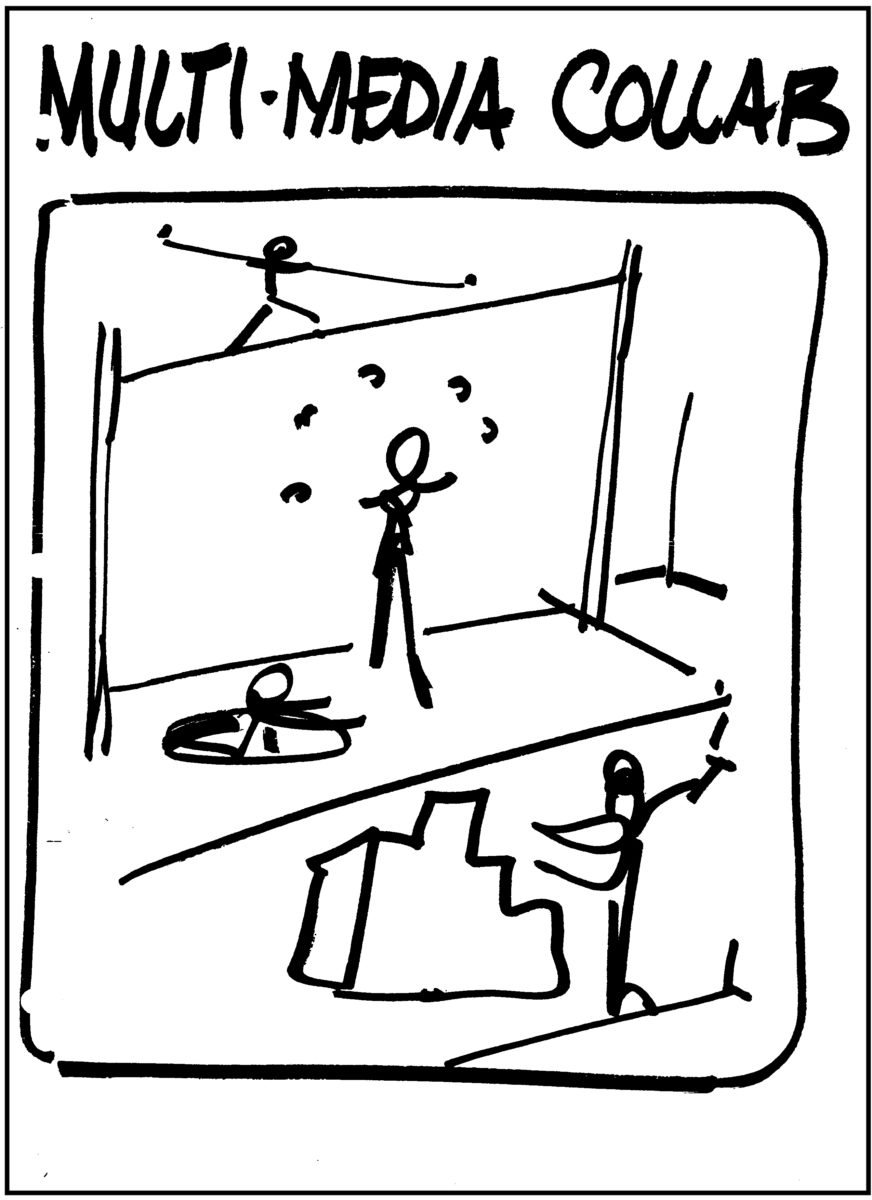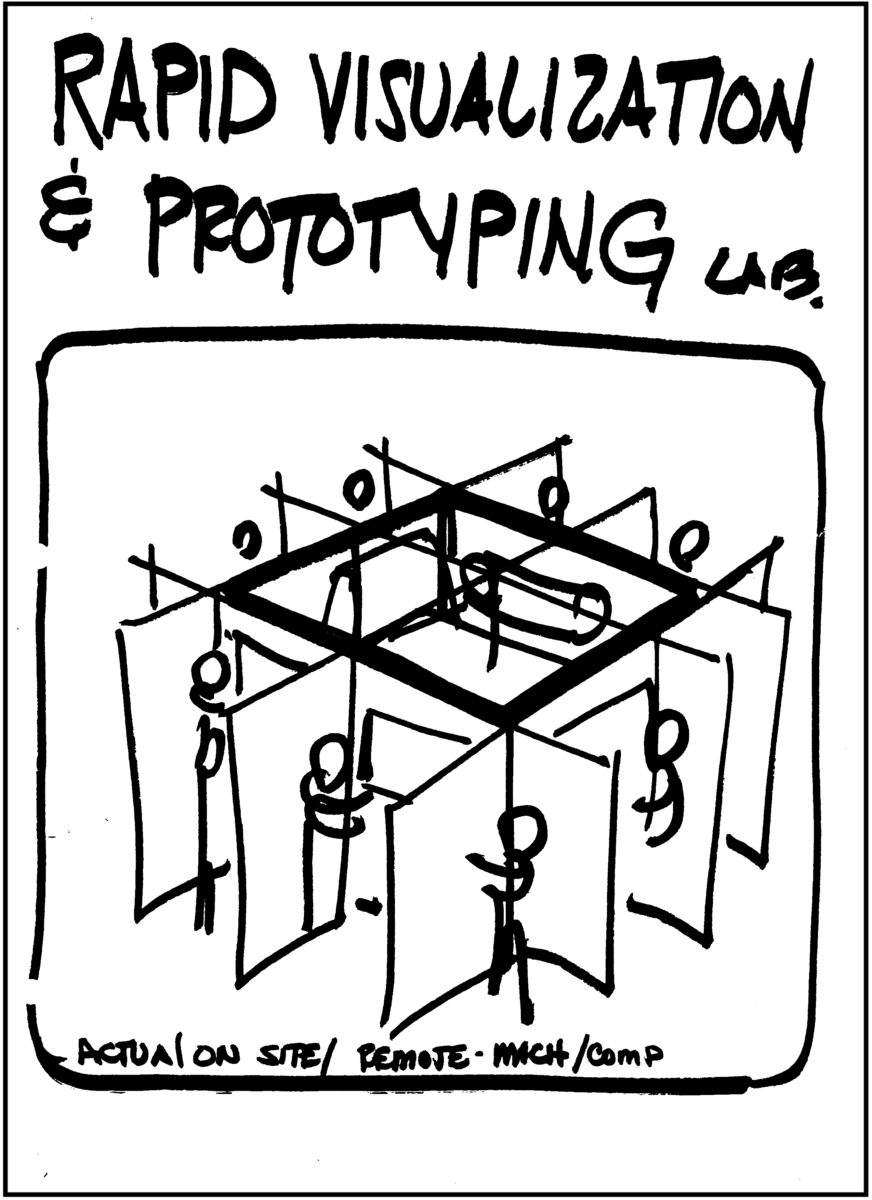
The James and Anne Duderstadt Center, formerly known as the Media Union, opened in 1996 as a special place to provide faculty and students with the tools and collaborative space for creating the future. Located on the University of Michigan North Campus, the Duderstadt Center houses the Art, Architecture, and Engineering Library, the College of Engineering Computer Aided Engineering Network (CAEN), the Digital Media Commons, and the Millennium Project, the building provides a nexus for creative and technological innovation across disciplines. The Mujo Cafe provides a space for refreshment and social interaction.
With more than 400 computers, provisioned with extensive software offerings, the Duderstadt Center is the largest public computing site at the University of Michigan. It also offers student access to 3D and virtual reality labs, a large video production studio, three state-of-the-art audio recording studios, advanced video conferencing resources, and unique collaboration rooms. The AAEL (U-M Library) engineering resources are among the most comprehensive in the country with large portions of its journal holdings being available electronically. The library’s Special Collections and Visual Resources Collection (Imageworks) offer special resources to support the School of Art and Design, and the College of Architecture and Urban Planning.
Designed by Albert Kahn Associates of Detroit, the 250,000 square-foot Duderstadt Center (DC) features a vast north-facing expanse of glass that illuminates the first floor Atrium, its colorful mural “Euclid’s Comet” by Dorothea Rockburne, and the second floor library lobby. Pyramidal skylights atop the Atrium further enhances the openness of these common areas.

Building History
The following excerpt is from a chapter of the history of the Duderstadt Center titled: “ITIC – ‘Integrated Technology Instruction Center’ – Media Union – Duderstadt Center” by Dr. James J. Duderstadt, President Emeritus of the University of Michigan.
The University of Michigan provides an example of how academic programs characterized by technology-driven creative activities can evolve. On its North Campus, the U-M is fortunate to have several schools that focus on the creative activities of society that increasingly leverage the latest technologies to enhance human experience through engineering, the performing arts – music, theatre and dance; art and design; architecture; and information science. During the establishment of the North Campus, the deans of these schools frequently referred to the North Campus as the “Renaissance Campus” (the original North Campus coffee shop was named “Leonardo’s”).


Above: Just two of nearly 100 storyboard sketches done in the early 1990s by Alan Samuels (then Dean of the School of Architecture), envisioning the spaces and activities the “Media Union” would make possible.
Key in responding to the core creative nature of these schools was a new facility proposed by the deans in the early 1990s to serve as a “creative commons” supporting interdisciplinary activities in “making things”: 3-D objects, virtual reality simulations, multimedia art forms, CGI- based performances and much more, responding to a growing need for both student learning and faculty participation in such activities.
Initially named the “Media Union”, the new facility was envisioned as an innovation commons or creation space where students, faculty, and staff from multiple disciplines could gather to create, invent, design, and even make things (whether objects of art, performances, buildings, or altogether new applications of emerging technologies).
The fundamental purpose of the Media Union was to provide the North Campus schools with access to the rapidly evolving technologies that would change both their disciplines and their educational paradigms. Although all of the schools were exploring the impact of computer technology, the Internet was still relatively new, and the transition of documents from physical books to digital libraries (and into the “cloud”) was just beginning. It was also intended as an innovation commons, where students from the various North Campus disciplines (along with those from Central Campus venturing into the “north country”) could join together to learn and create.
The University of Michigan Media Union
The team of deans, faculty, and staff responsible for the design of the new project envisioned it as more akin to the MIT Media Lab, although extending its mission beyond research to include instruction and performance. It was designed as a high-tech collection of studios, laboratories, workshops, performance venues and gathering and study spaces for students. The Media Union was viewed from the beginning as a place intended primarily for collaboration and innovative learning, research, and performance, a place where students, faculty, and staff could access a technology-rich environment to create their dreams, a
place open to all “who dared to invent the future.”